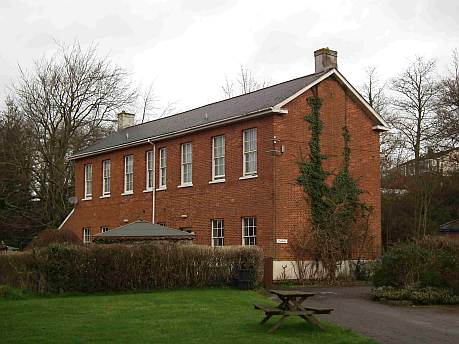Crediton Workhouse
Crediton Poor Law Union 1840 Enquiry 1895 Report Scurvy in Crediton Workhouse 1847
Crediton Workhouse was built in 1838 at the Western end of Crediton, to a hexagonal design. Most of the original building has now been converted into flats.
There were two important investigations into standards at this workhouse:
In 1840, the Poor Law Commissioners from London conducted an enquiry after allegations of neglect resulting in the deaths of two inmates.
In 1895, the British Medical Journal inspected the workhouse and produced a critical report.
Crediton Workhouse Act of 1697
According to the long title of the Crediton Workhouse Act of 1697, “The poor who are very numerous within the Bounds and Parish of Crediton alias Kyrton in the County of Devon and hamlett of Sandford within the said Parish doe dayly multiply and Idlenesse and Debauchery increase for want of workhouses to sett them at work”.
The 1697 Act accordingly established a corporation of church governors and other Crediton residents with powers to build a workhouse, compel the idle poor to take up employment and to levy taxes on the local parish population to cover the expenditure.
By this act, the corporation also had jurisdiction over poor children until they reached 16, whereupon they might be apprenticed for a period not exceeding 7 years. The court was authorised to punish the misbehaviour of any poor person in corporation premises.
Two workhouses were built by 1700 pursuant to the 1697 Act, one in the town of Crediton built for 90 inmates behind the church, and one in the village of Sandford for 60 inmates.
The establishment of the Crediton Poor Law Union in 1836 resulted in a new workhouse on a site to the West of Crediton which opened in 1838, when the earlier buildings became redundant. The old Crediton Workhouse - the men's ward had a thatched roof - was demolished. In addition four "poor houses" in both Colebrooke and Bow were sold in 1838/9.


Initially men were put to work pumping water or crushing bones for fertiliser, and women had to pick oakrum - i.e. unravel the fibres of old naval ropes ("junk") which would later be mixed with tar and used to repair holes in ships' hulls. Bone crushing was prohibited in 1846 and replaced by breaking stones.
In 1892 the secretary of the Eye Inirmary in Exeter wrote to the Guardians enquiring whether "eye protection" was used by stone splitters, and if not suggesting some were procured. As a result 6 pairs were bought.
